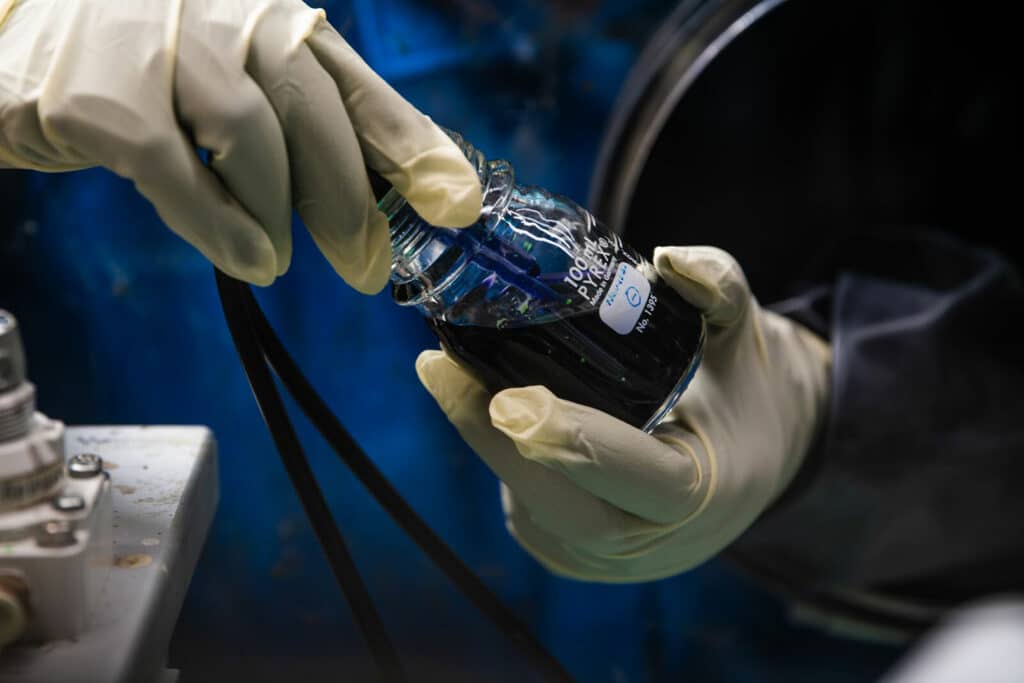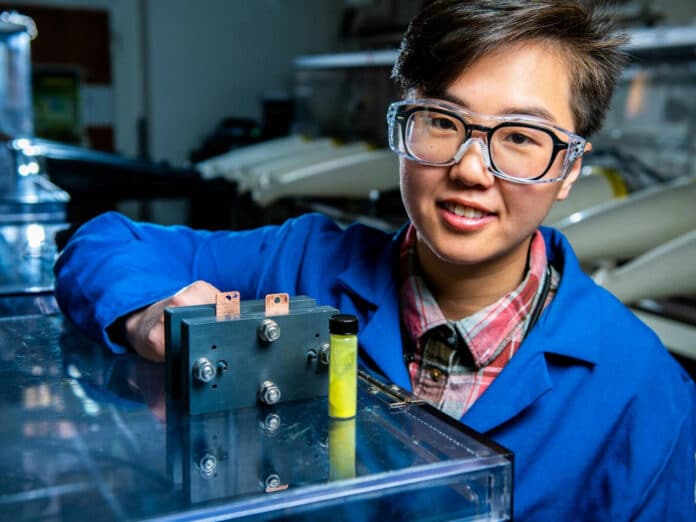Researchers from the Department of Energy’s Pacific Northwest National Laboratory (PNNL) have discovered that a simple sugar additive can significantly boost the capacity and longevity of a next-generation flow battery design. The battery maintained its capacity to store and release energy for more than a year of continuous charge and discharge.
Flow batteries have emerged as a promising solution for scalable, cost-effective, long-duration energy storage to address the intermittency introduced by increased renewable integration for the decarbonization of the electric power sector.
Typically, flow batteries consist of two chambers, each filled with a different liquid electrolyte, allowing for efficient energy conversion. The batteries charge through an electrochemical reaction and store energy in chemical bonds. When connected to an external circuit, they release that energy, which can power electrical devices. However, improving their capacity, longevity, and efficiency is challenging.
PNNL researchers tackled these obstacles by introducing a simple sugar derivative called β-cyclodextrin, enabling flow battery performance advancements.
“We were looking for a simple way to dissolve more fluorenol in our water-based electrolyte,” said Ruozhu Feng, the new study’s first author. “The β-cyclodextrin helped do that modestly, but its real benefit was this surprising catalytic ability.”

Working with Yale researchers, the researchers figured out the mechanism behind the boost. They found that the sugar additive accepts positively charged protons, which helps balance out the movement of negatively charged electrons as the battery discharges.
The β-cyclodextrin additive is also the first to speed up the electrochemical reaction that stores and then releases the flow battery’s energy in a process called homogeneous catalysis. This means that sugar works when dissolved in solution rather than as a solid applied to a surface.
In a series of experiments, researchers optimized the ratio of chemicals in the system until it achieved 60% more peak power. They then cycled the battery for over a year but only stopped the experiment when the plastic tube failed. During this time, the flow battery hardly lost any of its activity to recharge. According to researchers, this is the first laboratory-scale flow battery experiment showing more than one year of continuous use with minimal loss of capacity.
“This is a brand-new approach to developing flow battery electrolytes,” said Wei Wang, a long-time PNNL battery researcher and the study’s principal investigator. “We showed that you can use a totally different type of catalyst designed to accelerate the energy conversion. And further, because it is dissolved in the liquid electrolyte, it eliminates the possibility of a solid dislodging and fouling the system.”
The research team is now working to further improve the system by experimenting with other compounds that are similar to β-cyclodextrin but smaller. Adding β-cyclodextrin also makes the liquid thicker, which is less than ideal for a flowing system.
The work on flow batteries is part of a large program at PNNL to develop and test new technologies for grid-scale energy storage that will be accelerated with the opening of PNNL’s Grid Storage Launchpad in 2024.
Journal reference:
- Ruozhu Feng, Ying Chen, Xin Zhang, Benjamin J.G. Rousseau, Peiyuan Gao, Ping Chen, Sebastian T. Mergelsberg, Lirong Zhong, Aaron Hollas, Yangang Liang, Vijayakumar Murugesan, Qian Huang, Eric Walter, Sharon Hammes-Schiffer, Yuyan Shao, Wei Wang. Proton-regulated alcohol oxidation for high-capacity ketone-based flow battery anolyte. Joule, 2023; DOI: 10.1016/j.joule.2023.06.013
